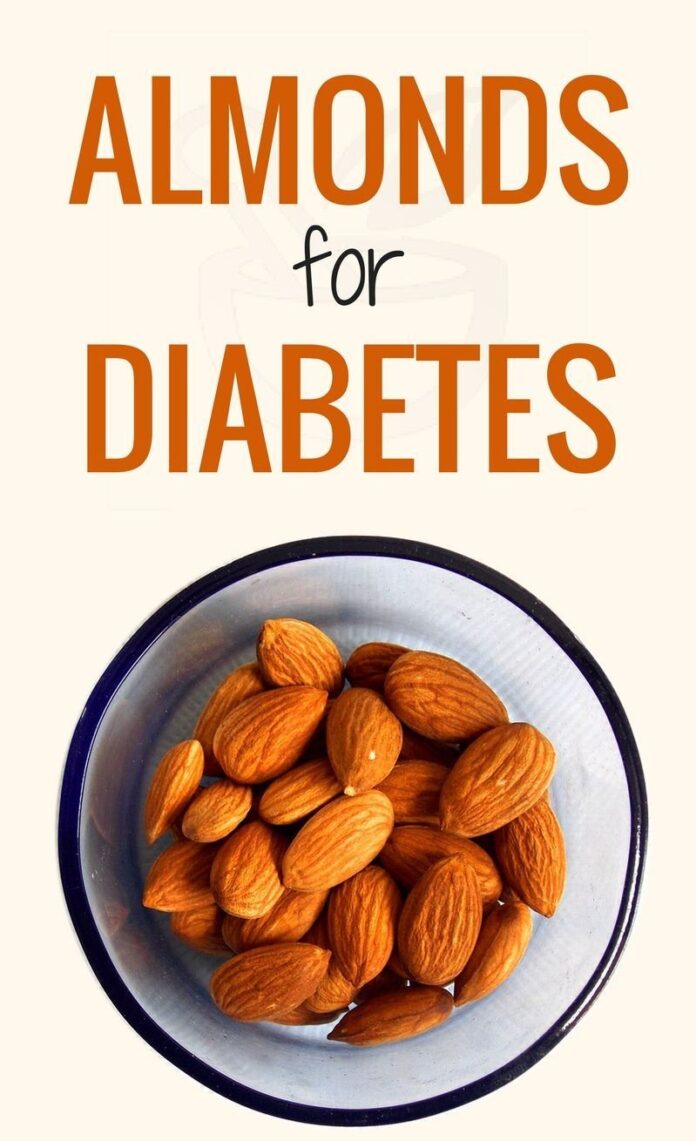Researchers find that almond snacking may help improve HbA1c and blood lipids in young adults and adolescents with prediabetes
New Delhi, 7th July. Over the last 40 years, the number of people living with diabetes globally has quadrupled and this upward trajectory is especially steep in India. In fact, Indians have the highest annual progression to type 2 diabetes from pre-diabetes (about 14-18%), which calls for lifestyle interventions to help reverse this trend.
When it comes to snack choices, almonds may be one easy – and tasty – dietary strategy. A new study showed that almond snacking helped improve glucose metabolism in adolescents and young adults in India with prediabetes.
This randomized controlled clinical trial aimed to determine the effect of almond consumption on factors of metabolic dysfunction including blood glucose, lipids, insulin, and selected inflammatory markers in adolescents and young adults (aged 16-25 years old) with prediabetes, who resided in Mumbai, India. The study was a randomized, parallel trial of 275 participants (59 male, 216 female) with impaired glucose metabolism (prediabetes). At the start of the study, participants’ weight, height, and waist and hip circumferences were measured and fasting blood samples were taken. Participants also underwent a glucose tolerance test and their lipid profiles were assessed.
The almond group (n=107) ate 56 grams (about 2 one-ounce servings, or ~340 calories) of unroasted almonds every day for three months and the control group (n=112) consumed a savory snack with the same number of calories. The consumption of almonds as snacks was tested in the almond group, while the control group consumed a savory snack that is commonly consumed by this age group in India. Both the almond and savory snacks accounted for ~20% of participants’ total calorie intake.
Throughout the duration of the study, participants were monitored to ensure they were compliant in eating their snacks. At the end of the study, participants completed dietary intake assessments and the same measurements and blood tests were performed again.
In the almond group, HbA1c (a measure of long-term blood sugar control that also serves as a diagnostic criteria for prediabetes and diabetes) decreased significantly compared to the control group. Improving blood sugar levels at the pre-diabetes stage may help prevent or delay the development of diabetes. Additionally, almond consumption reduced total cholesterol and “bad” LDL-cholesterol significantly compared to the control group, while maintaining “good” HDL-cholesterol levels.
There were no changes in measures of weight, height, waist or hip circumferencesor biochemical markers nor macronutrient intake between the almond group and the control from the start to post-intervention. Inflammatory markers (TNF-α and IL-6) decreased in the almond group and increased in the control group, but this was not a statistically significant result. Fasting blood glucose levels were significantly reduced in the control group compared to the almond group post-intervention. In the almond group, FG:FI ratio (fasting glucose: fasting insulin) decreased while it increased in the control group but was not statistically significant.
“Lifestyle changes including improved nutrition and exercise targeted at teens and young adults have the potential to halt the progression from prediabetes to type 2 diabetes. Results from this study show that the change does not have to be a major one – simply including a twice-daily snack of almonds can make a difference. The study results are very promising in showing how almonds improved total and LDL-cholesterol levels and reduced HbA1c levels in just 12 weeks of consumption,” said principal investigator, Dr. Jagmeet Madan PhD, Professor and Principal, Sir Vithaldis Thackersey College of Home Science (Autonomous), SNDT Women’s University (Mumbai).

Limitations of the study include that participants could not be blinded. Further, nutritional intervention studies can also trigger behavioral changes in both groups as the participants are made aware of their risk during the recruitment process. Further research is needed to investigate the effects of almond consumption on the same measures in other age groups and of different ethnicities.
This research joins another study investigating the potential role of almond consumption in younger people. Researchers at the University of California Merced, in a study funded by the Almond Board of California, demonstrated that for those college students who skip breakfast, a morning snack of almonds can be a smart option. Among predominantly breakfast-skipping college freshmen (73 males and females, 18 to 19 years old), including a morning snack – either of almonds or graham crackers – reduced total cholesterol and improved fasting blood sugar levels, but the benefits were greater with almonds. Those who snacked on almonds better preserved “good” HDL-cholesterol levels and improved measures of blood sugar regulation over the 8-week study.
Results showed that those in the almond group had better measures of several glucoregulatory and cardiometabolic health indicators, including:
• 13% lower 2-hour glucose area under the curve (AUC)
• 34% lower insulin resistance index (IRI)
• 82% higher Matsuda index during oral glucose tolerance testing, which represents a gross estimation of insulin sensitivity. This index almost doubled among the almond snackers.
• Better protection of HDL-cholesterol levels. Both groups saw reductions in HDL cholesterol, but the almond snackers’ levels fell by 13.5% compared to a 24.5% reduction in graham cracker snackers.
Almonds provide fiber (12.5 / 3.5 g per 100g / 30g serving) and 15 essential nutrients including (per 100g / 30g serving): magnesium (270 / 81 mg), potassium (733 / 220 mg), and vitamin E (25.6 / 7.7 mg) , making them a perfect nutrient-rich snack for those with impaired glucose tolerance or type 2 diabetes.
Study at a Glance:
The Study
• The study was a randomized, parallel trial of 275 participants (59 male, 216 female) with impaired glucose metabolism (prediabetes). The study participants had elevated fasting/stimulated blood glucose [fasting glucose (100-125 mg/dl),2h post-glucose (140-199 mg/dl)] and /or insulin [fasting insulin (=15mIU/ml) / stimulated insulin (=80mIU/ml)].
• At the start of the study, participants’ weight, height, and waist and hip circumferences were measured and fasting blood samples were taken. Participants underwent a glucose tolerance test and their lipid profiles were assessed.
• Whole blood was analyzed for complete blood count including hemoglobin, White Blood Cells (WBC), Red Blood Cells (RBC), platelets, Mean Corpuscular Volume (MCV), Mean Corpuscular Hemoglobin (MCH) and Mean Corpuscular Hemoglobin Concentration (MCHC).
• The almond group (n=107) ate 56 grams (about 2 servings, or ~340 calories) of almonds every day for 3 months and the control group (n=112) consumed a savory snack typical in India with the same number of calories. The control savory snack was prepared in two varieties to prevent taste fatigue using whole wheat flour, chickpea flour, salt, and Indian spices. Throughout the 90-day study, participants were monitored to make sure they were compliant in eating the almonds or savory snacks.
• At the end of the study (3 months), participants completed dietary intake assessments and the same measurements and blood tests were performed again.
Results
• HbA1c levels showed a statistically significant reduction in the almond group compared to the control group (Table 1).
• There was a decrease in the fasting blood glucose to fasting insulin ratio (FG:FI) in the almond group in comparison to the control group but was not statistically significant. The fasting blood glucose levels were significantly reduced in the control as compared to the almond group.
• There was no significant difference in HOMA-IR at the end of the study compared to the baseline between the two groups and within each group.
• The other biomarkers for glucose metabolism showed no significant difference between the almond and the control groups at the end of the study in comparison to the start of the intervention.
• There was a statistically significant reduction in the total cholesterol and LDL-cholesterol levels in the almond group in comparison to the control group. There was an increase in the HDL-cholesterol levels, a decrease in the triglyceride levels as well as a decrease in the VLDL-c levels in the almond group in comparison to the control group but it was not statistically significant.
Conclusion
Almonds were shown to have an effect on glucose metabolism by reducing HbA1c levels in adolescents and young adults in India at risk for developing diabetes in just 12 weeks. When included as a snack, almonds also helped manage dyslipidemia by reducing total cholesterol and “bad” LDL-cholesterol, while maintaining “good” HDL-cholesterol levels. Almonds can be a nutritious snack that can replace regular snack choices and can be part of a food-based strategy to help prevent or delay the development of diabetes, particularly in a younger population.
प्री-डायबिटीज: बादाम खाने से ब्लड ग्लूकोज कंट्रोल और कोलेस्ट्रॉल में होता है सुधार






































